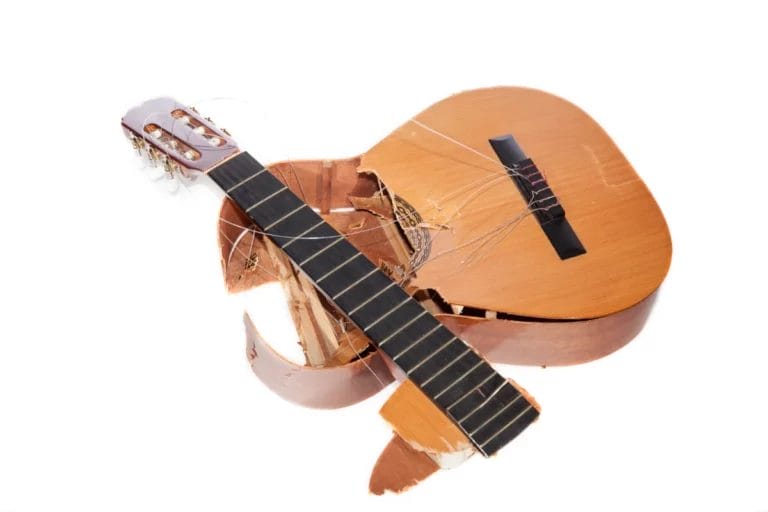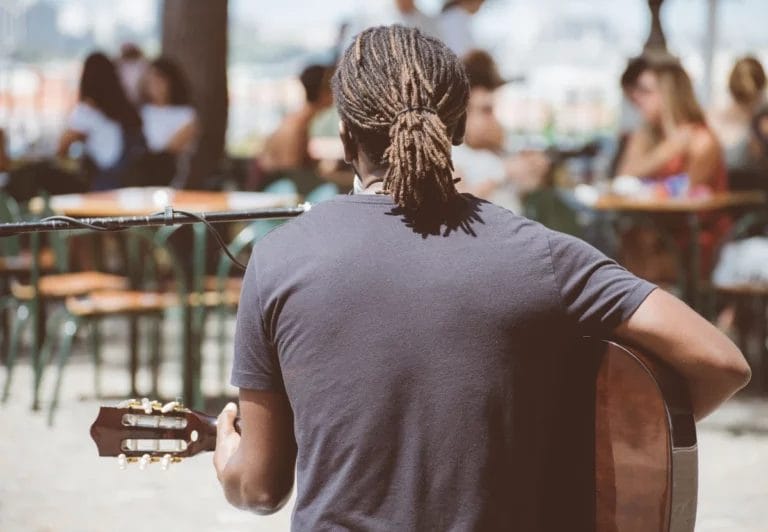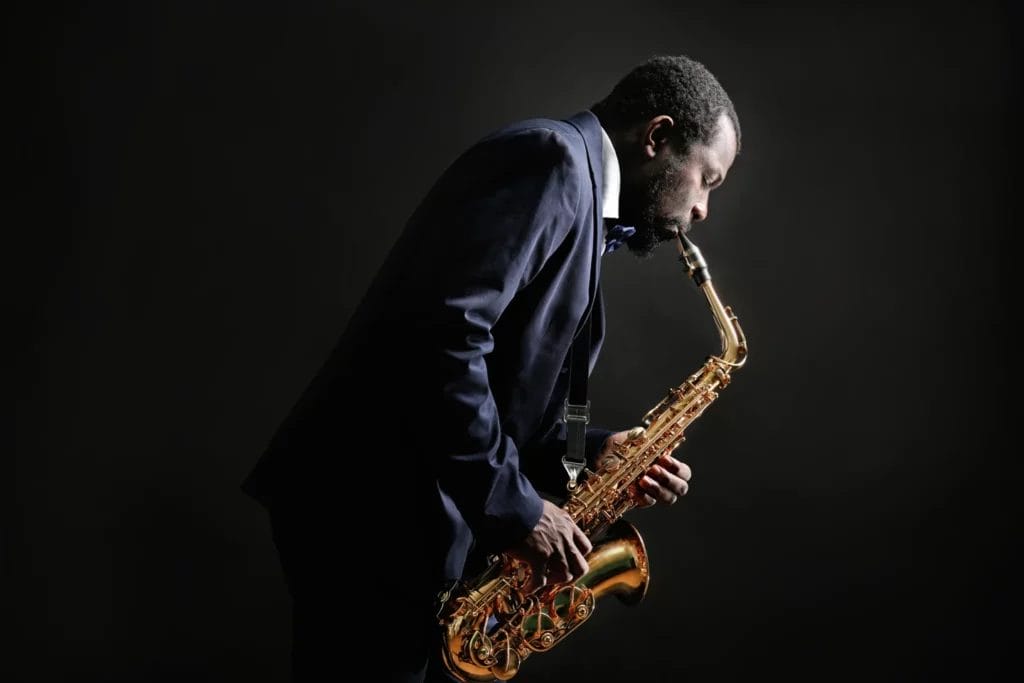
JoAnne Hammer | Program Manager
JoAnne Hammer is the Program Manager for Insurance Canopy. She has held the prestigious Certified Insurance Counselor (CIC) designation since July 2004.
JoAnne understands that starting and operating a business takes a tremendous amount of time, dedication, and financial resources. She believes that insurance is the single best way to protect your investment, business, and personal assets.
JoAnne Hammer is the Program Manager for Insurance Canopy. She has held the prestigious Certified Insurance Counselor (CIC) designation since July 2004.
JoAnne understands that starting and operating a business takes a tremendous amount of time, dedication, and financial resources. She believes that insurance is the single best way to protect your investment, business, and personal assets.
Your music career is taking off. You constantly practice your sets, rock out at local open mics and festivals, and network with other musicians. But did you know you can run into costly risks and mishaps during your performances?
Things can go wrong, like the riots and “mud” fights at Woodstock ‘99, compression asphyxia at Astroworld 2021, or heat exhaustion at Taylor Swift’s 2023 Eras show.
Whether or not you’re in the ranks of Travis Scott, Green Day, or Taylor Swift, accidents happen. What’s one thing these artists probably all have in common? Insurance. Whether you’re packing stadiums or the opening act at a music hall, liability insurance is one of the best ways to financially protect yourself, your partners, and your fans.
The best way to protect your bank account? Understanding what can go wrong, risk prevention, and musician liability insurance.
Real Musician Liability Claims
A musician’s career isn’t all guitar solos and after parties — it also involves being prepared for what could go wrong. Check out these six real-life music liability claims examples so you’re prepared for whatever comes your way.
1. Stolen Equipment from Your Car | $544
A punk-rock guitarist brought his guitar, two stereos, and an amplifier to a venue for a big set. The venue owner assured him they had amps and stereos that worked with his guitar, so he left the amp and stereo in the back seat of his locked car.
After a great gig, the guitarist returned to find his car window smashed and equipment missing.
The police did their best, but the gear was long gone. Now, the guitarist has to replace his stolen equipment before his next gig.
How to Prevent This
Car thefts or break-ins can happen anywhere. According to the National Insurance Crime Bureau (NICB), there were 850,708 car thefts in 2024.
Here are a few safety measures you can use to reduce this risk:
- Store your instruments and gear in the trunk
- Lock your vehicle at all times
- Park in well-lit areas with surveillance cameras
- Avoid parking in high-crime areas
- Be cautious of loiterers around parking lots and garages
Did you know? Claims for stolen or damaged equipment are common, but the best way to protect your business is to invest in musicians equipment coverage. This insurance covers repair or replacement costs for your essential gear.
2. Drenched Instrument | $920

A country artist performed at an extravagant wedding with her amazing vocals and guitar solos.
After the set, she put her guitar down to grab a quick drink. While away, someone spilled a whole glass of wine on her exposed guitar, causing wood corrosion and warping.
Now she has to choose between repairing or replacing her beloved guitar.
How to Prevent This
Spilled drinks can happen anywhere. Here are a few ways to prevent them:
- Use waterproof covers on your instruments or gear
- Set designated “No Drink Zone” areas
- Place gear and instruments in lockable cases
- Put your equipment on racks or shelves
- Encourage guests to use spill-proof cups and thermoses
3. The Speaker and the Hairline Fracture | $5,343
A saxophonist had an outdoor city barbecue gig. A massive windstorm swept through and knocked over his amplifier onto an attendee’s foot.
The guest suffered a hairline fracture, resulting in a trip to the hospital and eight weeks off work to recover. She sued the saxophonist for the cost of her medical bills and lost wages.
How to Prevent This
The National Weather Service warns that wind speeds over 58 mph are an extreme threat, especially for musicians who perform outdoors.
Here are a few ways you can prevent gear from falling off stages or blowing away:
- Place rubber mats or anti-slip pads under your equipment
- Use bungee cords or tie-downs on heavy equipment
- Use safety belts or anchor systems to secure speakers and amps
- Set safe boundaries between your gear and audiences
- Secure your gear with sturdy racks or stands
4. Marketing Faux Pas | $24,826

A skilled piano player posts videos and photos of his latest gigs on social media to promote his work. An audience member from the show saw the post and claimed that the pianist used them in the video without consent.
The audience member sued for misappropriation of likeness and won. The pianist had to pay court costs, legal fees, and damages..
How to Prevent This
Personal and advertising injury claims are offenses that result in mental and emotional damages instead of bodily harm, such as:
- Malicious prosecution
- Wrongful eviction
- Libel and slander
- Invasion of privacy
Using someone in your promotional ads without permission could result in lawsuits costing $500,000 in damages alone. You may also have to pay for other expenses like court, lawyer, and travel fees.
Here are a few ways to prevent costly claims and lawsuits like these from financially draining your business:
- Get signed photo or video release forms for permission
- Ensure all advertising materials are truthful and clear
- Check the U.S. Patent and Trademark Office (USPTO) database to avoid copyright infringement
- Don’t play copyrighted music without getting a public performance license
- Consult an entertainment lawyer before signing contracts
5. Entering a Venue Like a Wrecking Ball | $1,726

A violinist performed in a string quartet at a small local theater. After the show, she accidentally bumped the wall with her music stand, leaving a noticeable gouge in the drywall.
The venue sent her the repair invoice, which included materials and labor, plus a bill for the theater’s lost income for the half-day it closed for repairs.
How to Prevent This
Try these musician risk assessment tips to avoid property damage claims:
- Be mindful of fragile items like artwork or vases
- Inspect venues before performances and note pre-existing damages
- Use slip mats for slick or uneven flooring
- Invest in a rolling cart to haul your equipment to and from performance spaces
- Don’t encourage audience mosh pits or riots
6. Itchy Musician Merch | $563

A harpist and music instructor designed and sold t-shirts, bracelets, and other customized merch at her gigs and through her website. The harpists didn’t know that the manufacturer recently switched to a polyester blend for their apparel instead of cotton.
Unfortunately, a customer developed a severe rash after wearing their swag due to an allergy to synthetic fabrics. They sued the musician for their medical costs, which led to hefty lawyer and court fees.
How to Prevent This
Product liability insurance protects you from lawsuits that can drain your bottom line, but the best way to avoid claims is risk prevention. Here are a few ways to avoid the issues with your products:
- Use reputable manufacturers who comply with safety regulations
- Label apparel with clear washing instructions and warnings
- Inform customers of unsafe products and recall them immediately
- Address customer complaints right away to reduce lawsuits
- Ensure products meet safety regulations before shipping to customers
Learn more about liability insurance for harpists with our 5-minute guide!
Protect Yourself With Musician Liability Insurance
If mishaps can happen to Taylor Swift, Travis Scott, or Green Day, they can happen to you, too. Musicians insurance can save you from those unexpected costs when and if they arise.
Understanding musician insurance can save you from costly claims, including:
- Property damage
- Personal and advertising injury
- Bodily injury
- Product issues
FAQs About Musician Liability Claims
What Is General Liability for Musicians?
General liability insurance for musicians protects you from paying out of pocket for expensive third-party claims like bodily injury, property damage, and personal or advertising injury. It can cover expenses like medical bills, legal fees, and repair costs.
What Does Liability Insurance Cover if You’re Not at Fault?
Liability insurance only covers medical costs if you’re not at fault. This insurance policy can also cover defense fees if someone sues you.
What Situation May Be Covered by Liability Insurance?
Musician liability insurance may cover you from situations like these:
- Trip-and-fall accidents
- Property damage to venues or event spaces
- Using an audience member in your promotional materials without their permission
- A customer getting a rash from one of your musician t-shirts, hoodies, or other merch





